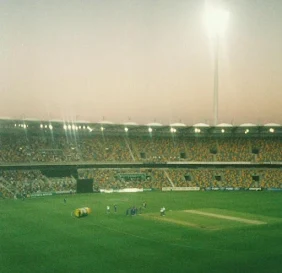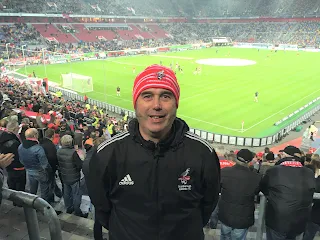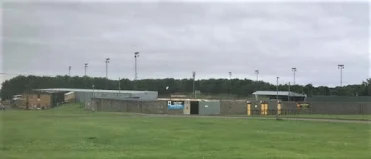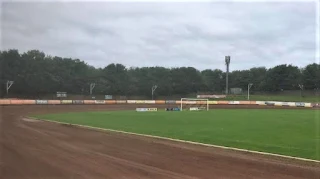My Top 10 Weekend
Groundhopping Destinations
Getting
the most from spare time off work or enjoying a casual break for those of us
lucky enough to be retired is always an attractive proposition. Those of us who
love our groundhopping understand just how valuable time is, especially when it
comes to fitting in multiple matches.
Therefore,
finding cities that offer such options with lots of clubs of all standards is
much desired. Ideally, with sightseeing, good food and drink, accessibility,
and nightlife, with affordable travel and hotels rounding off a general tick
list.
Much
of which cities or regions are preferred is down to personal choice and what
standard of football those travelling are prepared to drop down to. Some prefer
a couple of big games, while others enjoy doubles or trebles, ideally at new
venues.
Here,
in no particular order, are my favourite 10 destinations for my long weekends
away when I lived and worked in London before moving to Thailand, with some
kind of rationale behind the selections. Please feel free to comment or ask any
questions.
As
a teaser, I’ve added links to the blog page to the club of my favourite outing
in each city, which will give you some indication as to my eclectic tastes as
well as other links to somewhere I consider worth visiting while in the city or
a related video from my YouTube Channel, often with football influences.
Incidentally,
please subscribe to my YouTube Channel, free of charge, where there are heaps
of football videos, along with travel adventures around Thailand, which covers
football in many titles, as well as exploring other destinations.
1. Dusseldorf
Probably
my most regular go-to destination. Regular value flights to both Dusseldorf and
Cologne/Bonn offering excellent value. While Cologne is seen by many to be a
more attractive city, Dusseldorf’s Aldstadt beats it hands down in terms of a
night out after games, in my book.
Like
the Northwest of England, there are so many clubs to watch at all levels within
an hour or so, with train fares usually included in match tickets. Lots of
games kick off at different times, so doubles and trebles are sometimes
possible on a weekend, with choices too on a Friday night.
It's somewhere that will always be special to me as Fortuna v Bayern Munich was my first ever overseas match, and I have enjoyed so many great times in the area, including adjoining cities with the German Football Museum in Dortmund, a recently added attraction. A great atmosphere was enjoyed at several stadiums.
2. Bangkok
Bangkok.
On a weekend? Well, yeah, I know what you’re saying, but it’s not as impossible
as it sounds, though it is probably best to stretch a visit to 10 days if
travelling so far to get two weekends in.
The
Thai League has three pro divisions, with Thai League 3 regional including some
local derbies. There are also a couple of amateur leagues for local football
which have surprisingly well-appointed venues, while the semi-pro league from
March to May each year for election into T3. As for the food and nightlife! And
quality hotels are inexpensive.
Always something to watch throughout the year in a wonderful city, with my favourite side being very close to the tourist areas, where fans are earthy and have fun home or away, and the fan zone outside the stadium is what I think to be Bangkok's best beer garden.
3. Bilbao
A
city which often goes under the radar in groundhopping circles. There is often
a Friday evening opportunity with Santander and San Sabastian not too far away.
The valley reminds me of Newcastle, with a big river and lots of lower-league
clubs on either side of it.
Under-age
games start early on Saturday and Sunday mornings, along with a sprinkling of
lower league fixtures. Ideal opportunities for those groundhopping addicts
where food and drink are usually available at the venues, an ideal way to shake
off the excesses of the previous evening in a city famous for its snacks and
drink around great fans. An ideal location for a couples weekend too.
4. Glasgow
Many
prefer Edinburgh to Glasgow, but to me, the western Scottish city has more
heart and soul for a night out when a great atmosphere can be enjoyed. It’s
easy to get to the capital in an hour where there are generally more Friday
night opportunities, with Glasgow’s hotels making a significant savings.
You
need to get lucky for doubles, but with more clubs becoming savvy and sharing
their artificial pitches, it is no longer unusual. A great city with some tremendous venues where football
is a true passion and the mandatory scotch pie and Bovril should always be part of the day out, no matter what size of club or stadium is being visited.
5. Barcelona
Barca
is not dissimilar to Bilbao with its spread of fixtures through the junior
ranks and local clubs. Endless opportunities of doubles and trebles, depending
on how far down the scale you are prepared to go. Some extremely underrated venues, too.
Needless
to say, Barcelona is an incredible city to visit. Sightseeing and strolls
around the various districts with stops for food and drink more than make up
for any Monday night unavailability. And there is more than one major club in town.
6. Newcastle
The
Geordie capital just sneaked into my list thanks to the Northern League and
other feeders below it now including more Friday night fixtures and more
spread-out weekend kick-off times than once before, often to accommodate the chance of fans heading to the main attraction of the weekend.
Handy
for other cities such as Sunderland, with even Edinburgh accessible if there
are no other Friday night options. A great area and a hotbed of English
football, with a cracking social scene to match. It’s not far from the sea
either, with an excellent transport system making everywhere accessible.
7. Prague
Another
magnificent destination with endless food and drink options, some amazing
sightseeing, and a great place to stay offering magnificent value for money. One of Europe's great cities for a long weekend, it is easy to wander around. There is also no shortage of passion on a matchday.
The
big attraction to me about Prague is that the lower leagues have kickoffs at
10.15am on a weekend as well as some late start times, with the major clubs
sides under 19s playing on a Monday afternoon when I visited. There is even a club that plays regularly on a Sunday morning near the centre of town where the fans sing about their famous sausages.
8. Vienna
Oh,
Vienna. as Ultravox sang. Another classic city with a great history well worth
chasing up. Absolutely no danger of going hungry or thirsty, in a place I thought
was like an up-market city in Germany.
Again,
lots of clubs with numerous kick-off times, with Friday night offering plenty
of choices to get the weekend underway. I found games in a Christian League on
a Monday night to tick off another venue, while Bratislava is only an hour away
on the train for those wanting even more out of their visit.
9. Brussels
Many
people are put off by Brussels, considering it to have gone downhill and is
rough around the edges. I thought it a good place, again with no shortage of
food and drink and accessibility to so many other cities within an hour or so.
Lots
and lots of venues, some being real classics with grandstands like the old
non-league days and grounds in England. Passion was always in abundance on my
visits, with an earthy edge to affairs in some stadiums often missing
elsewhere.
10. Berlin
Last
but certainly not least. Berlin. History is everywhere you look, especially in
the east of the city, including their football clubs as they tried to deal with the old regime. Another destination with great links to other nearby
football towns if looking to fill a fix. Great nightlife and accessibility make
it a perennial favourite.
As
with many other German cities, matches galore from Friday evening through to late Sunday afternoon, at all levels, including the chance to tick off the
iconic Olympic Stadium as well as experience the passion of a real fans owned club.
The Travel Adventures of Rob B! YouTube Channel














.png)






























.png)











